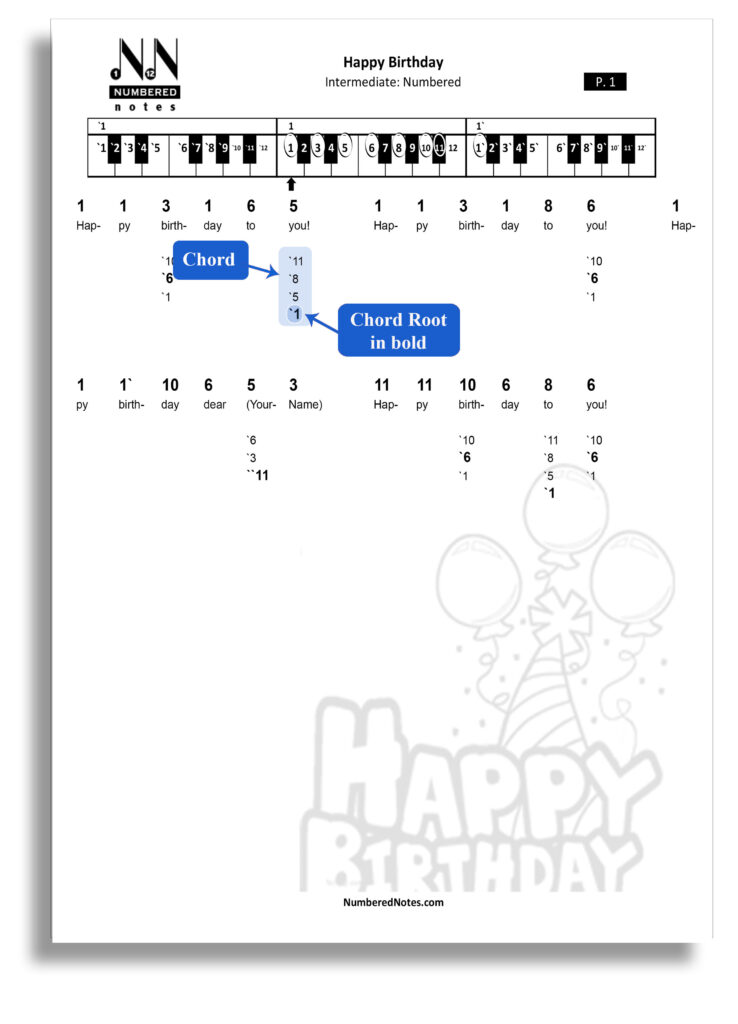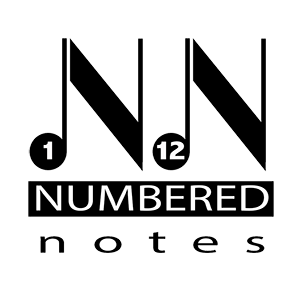Lettered notes on the staff lines become numbers with “octave-lines”.

Each lettered notes gets an equivalent numbered note.

Sheet Music skill levels:
Beginner:

Intermediate:

Advanced:

Primary aspects of music notation are written in number and other text symbols. This allows Numbered Notes to be written in any text editor. Any spread sheet will work.
Numbered Notes innovation makes playing piano available to everyone.
There are varying reasons why one may not be able to learn to play music. First of all having an instructor to teach one how to read music is expensive or not available. Furthermore having access to easy to understand piano learning formats that can remove the mystery of what music note symbols mean can be difficult to find. I think we can all relate to these reasons and I’m sure you can think of others as well.
Traditional music notation was created over a few hundred-years period. During this time various ideas from different schools of thought were combined. Similarly the English language is very difficult to learn. Music like the English Language combines words from many origins. Furthermore it applies obscure rules to words that it does not apply to other words. Thus there is no one unified format which often seems to be the case when learning to play piano.
Historical Context
Numbered Notes innovation has expanded on an idea that was created by Pierre Galin, “Galin-Paris-Cheve” system (1786-1822). In China they call the system “Pinyin”.
In ancient China there was a system called “Gongche”, the PinYin / Galin-Paris-Cheve system is comparable. Next there is the Ziffersystem which is used in Germany, France, Russia and Holland. The Ziffersystem eventually made it to North and South America. Furthermore these systems use numbers 1 – 7 to be used instead of ut, re, me, fa, sol, la, se. In contrast Numbered Notes uses 1-12.
Numbered Notes assigned a number to each note in an octave (there are 12 notes in a piano octave). Additionally we use common computer keyboard symbols to denote other characteristics of a note, chord or playing features. For that reason Numbered Notes removes the mystery of traditional music notation. Numbered Notes does this by giving music common numbers and characteristics. These characteristics all recognize and it enable everyone the ability to learn to play the piano with ease and simplicity.
Now that you know what the historical context of Numbered Notes is, and what we are trying to achieve, check out our innovation and become part of the revolution.

